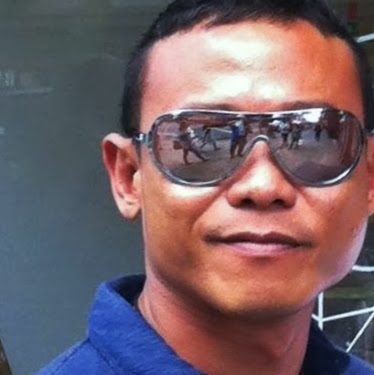Peter P Fong
age ~78
from Los Angeles, CA
- Also known as:
-
- Peter Etal Fong
- Peter E Fong
- Susan P Fong
- Phone and address:
- 528 Midvale Ave, Los Angeles, CA 90024
Peter Fong Phones & Addresses
- 528 Midvale Ave, Los Angeles, CA 90024
- 1421 S 9Th St, Alhambra, CA 91803
- 1701 S Vega St, Alhambra, CA 91801
- 901 W Valley Blvd #C, Alhambra, CA 91803
- 901 W Valley Blvd #C W C, Alhambra, CA 91803
- Monterey Park, CA
- 332 N Old Ranch Rd, Arcadia, CA 91007 • (626)6786319
- Glendale, CA
- Cerritos, CA
- San Gabriel, CA
Wikipedia References

Peter Fong
License Records
Peter Fong
License #:
6056 - Expired
Category:
Pharmacy
Issued Date:
Sep 14, 2005
Effective Date:
Sep 1, 2010
Expiration Date:
Sep 1, 2010
Type:
Pharmacist Intern
Medicine Doctors

Peter E. Fong
view sourceDescription:
Dr. Fong graduated from the Creighton University School of Medicine in 1986. He works in Calhoun, GA and 1 other location and specializes in Pain Management and Addiction Medicine. Dr. Fong is affiliated with Gordon Hospital and Southern Regional Medical Center.
Us Patents
-
Active Fixation Lead With Multiple Density
view source -
US Patent:7092766, Aug 15, 2006
-
Filed:Nov 19, 2003
-
Appl. No.:10/718216
-
Inventors:Scott Salys - Santa Clarita CA, US
Peter Fong - Northridge CA, US
Phong D. Doan - Stevenson Ranch CA, US -
Assignee:Pacesetter, Inc. - Sylmar CA
-
International Classification:A61N 1/00
-
US Classification:607127, 607128
-
Abstract:An implantable lead adapted to transmit electrical signals between a connector assembly on a proximal end of the lead and at least one electrode carried by a distal end of the lead comprises a helical fixation element extendable and retractable from the distal end of the lead, the header comprising (a) an inner header part comprising an electrically conductive material that is substantially transparent fluoroscopically, the inner header part having a distal end, (b) an outer header part comprising an electrically insulating material, and (c) a collar attached to the distal end of the inner header part. The collar comprises a material that is substantially opaque fluoroscopically. The collar may be electrically conductive, and electrically and mechanically connected, preferably by means of an overlap joint, to the distal end of the inner header part. The conductive collar thus may be electrically connected to an electrical contact on the connector assembly via the electrically conductive inner header part, whereby the collar may be used for mapping the electrical activity of local body tissue. Alternatively, the collar may be electrically isolated by, for example, covering the outer surface of the collar with an electrically insulating layer.
-
Interactive Talking Dolls
view source -
US Patent:20010034180, Oct 25, 2001
-
Filed:Jun 18, 2001
-
Appl. No.:09/883762
-
Inventors:Peter Fong - Monterey Park CA, US
Chi Fai Mak - Kowloon, HK -
International Classification:A63H030/02
A63H003/28 -
US Classification:446/175000, 446/297000
-
Abstract:A set of interactive toys that perform a sequence of actions in response to one another without external activation other than an initial actuation to begin the sequence of actions. Preferably, each toy has an activation switch and/or a receiver for a wireless signal such as an infrared signal which activates the toy. Upon activation, the toy performs a desired action, such as the enunciation of a speech pattern, and signals another toy to perform a responsive action. Preferably, the toy are capable of performing several different action sequences, such as the enunciation of different conversations, the performance of different movements, etc. Additionally, the toys are programmable by a remote control device. The remote control device either functions as an activation switch, initiating a random or predetermined (yet not user determined) sequence of interactions, or as an interaction selector, such that a desired sequence of actions may be selected.
-
Interactive Talking Dolls
view source -
US Patent:20020024447, Feb 28, 2002
-
Filed:Jul 24, 2001
-
Appl. No.:09/876367
-
Inventors:Peter Fong - Monterey Park CA, US
Chi Fai Mak - Kowloon, HK -
International Classification:G05B019/02
-
US Classification:340/825220
-
Abstract:A set of interactive toys that perform a sequence of actions in response to one another without external activation other than an initial actuation to begin the sequence of actions. Preferably, each toy has an activation switch and/or a receiver for a wireless signal such as an infrared signal which activates the toy. Upon activation, the toy performs a desired action, such as the enunciation of a speech pattern, and signals another toy to perform a responsive action. Preferably, the toy are capable of performing several different action sequences, such as the enunciation of different conversations, the performance of different movements, etc. Additionally, the toys are programmable by a remote control device. The remote control device either functions as an activation switch, initiating a random or predetermined (yet not user determined) sequence of interactions, or as an interaction selector, such that a desired sequence of actions may be selected.
-
Interactive Talking Dolls
view source -
US Patent:20020061708, May 23, 2002
-
Filed:Jun 13, 2001
-
Appl. No.:09/880425
-
Inventors:Peter Fong - Monterey Park CA, US
Chi Fai Mak - Kowloon, HK -
International Classification:A63H003/28
-
US Classification:446/297000
-
Abstract:A set of interactive toys that perform a sequence of actions in response to one another without external activation other than an initial actuation to begin the sequence of actions. Preferably, each toy has an activation switch and/or a receiver for a wireless signal such as an infrared signal which activates the toy. Upon activation, the toy performs a desired action, such as the enunciation of a speech pattern, and signals another toy to perform a responsive action. Preferably, the toy are capable of performing several different action sequences, such as the enunciation of different conversations, the performance of different movements, etc. Additionally, the toys are programmable by a remote control device. The remote control device either functions as an activation switch, initiating a random or predetermined (yet not user determined) sequence of interactions, or as an interaction selector, such that a desired sequence of actions may be selected.
-
Interactive Talking Dolls
view source -
US Patent:20020187722, Dec 12, 2002
-
Filed:Jul 22, 2002
-
Appl. No.:10/200696
-
Inventors:Peter Fong - Monterey Park CA, US
Chi Fai Mak - Kowloon, HK -
International Classification:A63H030/00
-
US Classification:446/175000
-
Abstract:A set of interactive toys that perform a sequence of actions in response to one another without external activation other than an initial actuation to begin the sequence of actions. Preferably, each toy has an activation switch and/or a receiver for a wireless signal such as an infrared signal which activates the toy. Upon activation, the toy performs a desired action, such as the enunciation of a speech pattern, and signals another toy to perform a responsive action. Preferably, the toy are capable of performing several different action sequences, such as the enunciation of different conversations, the performance of different movements, etc. Additionally, the toys are programmable by a remote control device. The remote control device either functions as an activation switch, initiating a random or predetermined (yet not user determined) sequence of interactions, or as an interaction selector, such that a desired sequence of actions may be selected.
-
Interactive Led Device
view source -
US Patent:20040067714, Apr 8, 2004
-
Filed:Feb 12, 2003
-
Appl. No.:10/365112
-
Inventors:Peter Fong - Monterey Park CA, US
-
International Classification:A63H030/00
-
US Classification:446/175000
-
Abstract:An interactive light emitting diode display having a plurality of individual light-emitting diode units. Each light-emitting diode unit further has at least one light-emitting diode die, an individual driving circuit operative to drive the light-emitting diode die, a micro-controller unit operative to transmit a driving signal to the driving circuit and an activation/inactivation signal, and a transceiver operative to transmit the activation/inactivation signal to activate/inactivate another light-emitting diode unit, and to receive an external activation/inactivation signal.
-
Level/Position Sensor And Related Electronic Circuitry For Interactive Toy
view source -
US Patent:20040075571, Apr 22, 2004
-
Filed:Jul 25, 2003
-
Appl. No.:10/628007
-
Inventors:Peter Fong - Monterey Park CA, US
-
International Classification:G08B021/00
-
US Classification:340/689000
-
Abstract:A sensor for use in an interactive electronic device. The sensor comprises a housing having a side wall defining an inner surface, a top plate attached to the side wall and defining an inner surface, and a bottom plate attached to the side wall and also defining an inner surface. The inner surfaces of the side wall and the top and bottom plates collectively define an interior chamber. Disposed on the inner surface of the top plate is at least one top conductive pad, while disposed on the inner surface of the bottom plate is at least one bottom conductor pad. At least one switch partially extends into the interior chamber of the housing. Disposed within the interior chamber and rotatably connected to the housing is a trigger mechanism. The sensor is operative to generate a plurality of different conditions or states corresponding to respective positions of the housing relative to a reference plane. The conditions are generated by the movement of the housing relative to the reference plane, and the resultant contact between the trigger mechanism and at least one of the top conductive pad, the bottom conductive pad, and the switch.
-
Interactive Talking Dolls
view source -
US Patent:20040082255, Apr 29, 2004
-
Filed:Sep 9, 2003
-
Appl. No.:10/658043
-
Inventors:Peter Fong - Monterey Park CA, US
Chi Mak - Kowloon, HK -
International Classification:A63H033/04
-
US Classification:446/075000
-
Abstract:A set of interactive toys that perform a sequence of actions in response to one another without external activation other than an initial actuation to begin the sequence of actions. Preferably, each toy has an activation switch and/or a receiver for a wireless signal such as an infrared signal which activates the toy. Upon activation, the toy performs a desired action, such as the enunciation of a speech pattern, and signals another toy to perform a responsive action. Preferably, the toy are capable of performing several different action sequences, such as the enunciation of different conversations, the performance of different movements, etc. Additionally, the toys are programmable by a remote control device. The remote control device either functions as an activation switch, initiating a random or predetermined (yet not user determined) sequence of interactions, or as an interaction selector, such that a desired sequence of actions may be selected.
Resumes

Professor Of Biology At Gettysburg College
view sourceLocation:
United States

Principal Development Engineer At St. Jude Medical
view sourcePosition:
Principal Development Engineer at St. Jude Medical
Location:
Greater Los Angeles Area
Industry:
Medical Devices
Work:
St. Jude Medical - Greater Los Angeles Area since Jan 2013
Principal Development Engineer
St. Jude Medical - Greater Los Angeles Area Mar 2002 - Dec 2012
Medical Device Engineering Professional
self 2009 - 2009
Self
Teradyne Jun 1999 - Sep 2001
Mechanical Engineer
HP Jun 1998 - Aug 1998
Thermal Science Summer Intern
Principal Development Engineer
St. Jude Medical - Greater Los Angeles Area Mar 2002 - Dec 2012
Medical Device Engineering Professional
self 2009 - 2009
Self
Teradyne Jun 1999 - Sep 2001
Mechanical Engineer
HP Jun 1998 - Aug 1998
Thermal Science Summer Intern
Education:
Cal Poly San Luis Obispo 2012
Master of Science (M.S.), Biomedical Engineering University of California, Berkeley 1994 - 1999
BS, Mechanical Engineer College of the Canyons
Wooland
douglass jr. high
Master of Science (M.S.), Biomedical Engineering University of California, Berkeley 1994 - 1999
BS, Mechanical Engineer College of the Canyons
Wooland
douglass jr. high

Peter Fong
view sourceLocation:
United States

Vice President Student Services At Fullerton College
view sourcePosition:
Vice President Student Services at Fullerton College
Location:
Orange County, California Area
Industry:
Education Management
Work:
Fullerton College
Vice President Student Services
Vice President Student Services

Financial Services Professional
view sourcePosition:
Owner at Financial Services Representative
Location:
Greater Los Angeles Area
Industry:
Insurance
Work:
Financial Services Representative since Nov 1990
Owner
Asian Business League 2005 - 2005
Former President
Owner
Asian Business League 2005 - 2005
Former President
Education:
University of California, Los Angeles 1981 - 1986
Name / Title
Company / Classification
Phones & Addresses
President
BEST WEST REALTORS INC
Real Estate Agent/Manager
Real Estate Agent/Manager
332 N Old Rnch Rd, Arcadia, CA 91007
1421 S 9 St, Alhambra, CA 91803
1421 S 9 St, Alhambra, CA 91803
Educator
Fullerton College Associated Students
Civic/Social Association Business Consulting Services · Colleges, Universities, and Professional Schools
Civic/Social Association Business Consulting Services · Colleges, Universities, and Professional Schools
321 E Chapman Ave, Fullerton, CA 92832
(714)9927256, (714)9927384, (714)9927579
(714)9927256, (714)9927384, (714)9927579
Bright International Financial Company, LLC
322 N Old Rnch Rd, Arcadia, CA 91007
South Wilson Investment Group, A California Limited Partnership
Investor
Investor
625 Fair Oaks Ave, South Pasadena, CA 91030
President
PHOENIX BUILDERS, INCORPORATED
3202 Cold Pln, Hacienda Heights, CA 91745
3202 Cold Pln Dr, Whittier, CA 91745
3202 Cold Pln Dr, Whittier, CA 91745
President
ADVANCED TECHNOLOGY PRODUCTS INC
12407 Slauson Ave #F, Whittier, CA 90606
President
BEST WEST REALTY INC
901-C W Vly Blvd, Alhambra, CA 91803
901 W Vly Blvd, Alhambra, CA 91803
901 W Vly Blvd, Alhambra, CA 91803
Principal
Video 4U
Video Tape Rental
Video Tape Rental
318 W Beverly Blvd, Montebello, CA 90640
Vehicle Records
-
Peter Fong
view source -
Address:433 W Msn Rd, Alhambra, CA 91801
-
Phone:(213)2489780
-
VIN:JH4CU2F40CC025974
-
Make:ACURA
-
Model:TSX
-
Year:2012
Plaxo

Fong Peter
view sourceTianjin, ChinaPast: Senior Manager at GuocoLand China, Director of Design & Construction at IHG
Youtube
Googleplus

Peter Fong

Peter Fong

Peter Fong

Peter Fong

Peter Fong

Peter Fong

Peter Fong

Peter Fong
Myspace
Get Report for Peter P Fong from Los Angeles, CA, age ~78








